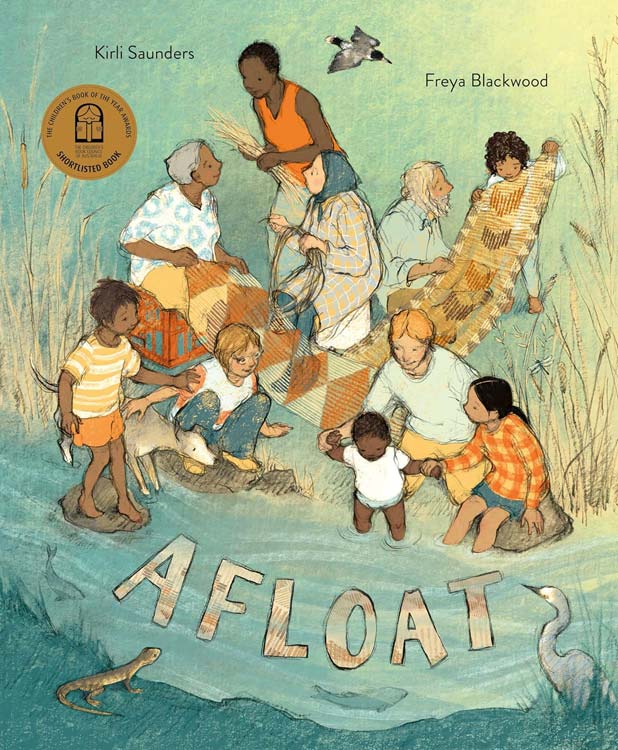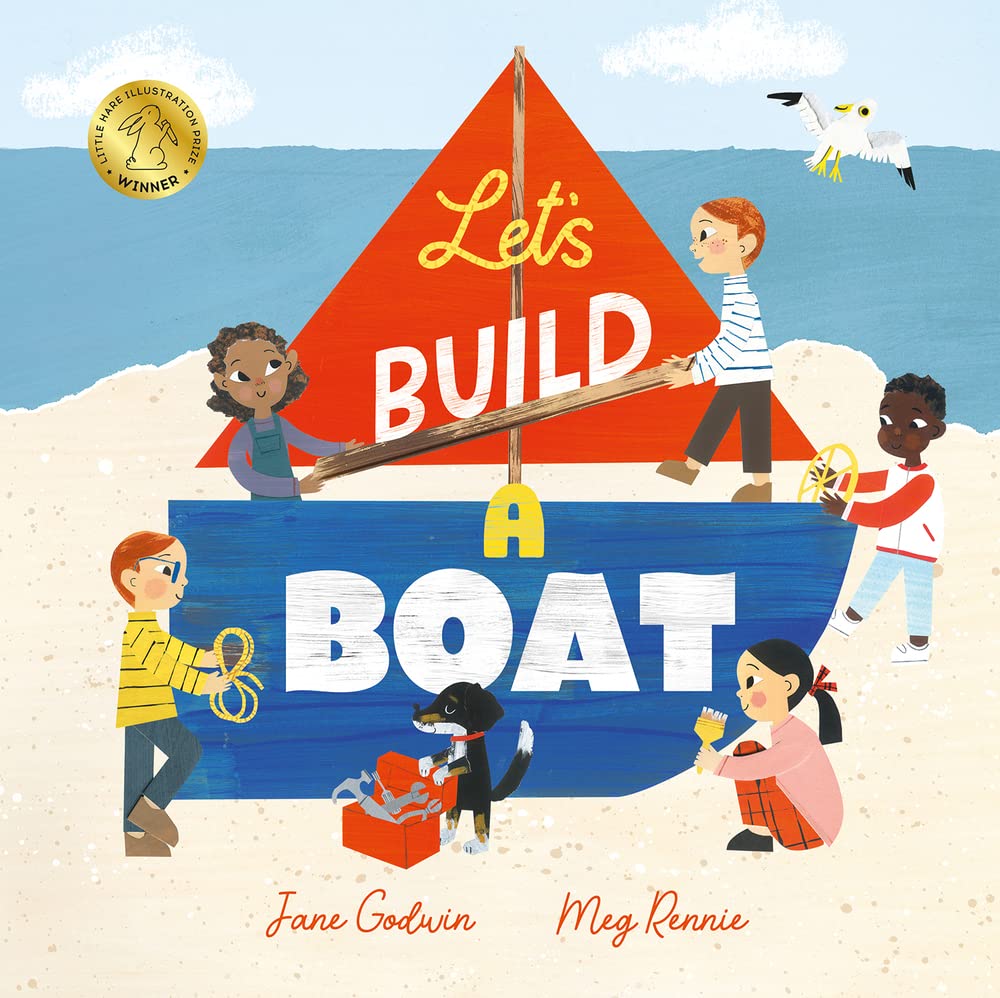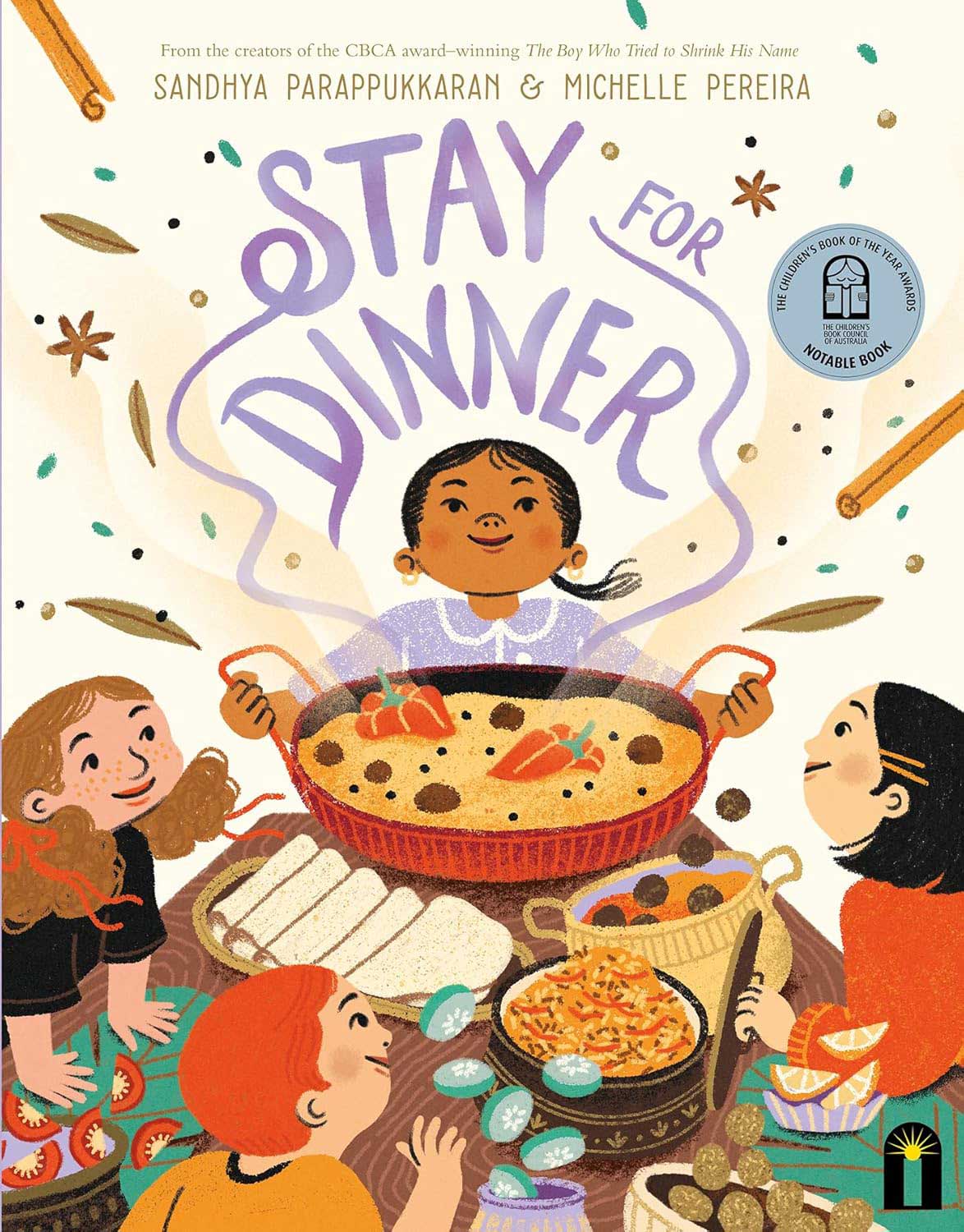AC9HP2P01
Health and Physical Education | Year 1,Year 2
Describe their personal qualities and those of others, and explain how they contribute to developing identities
Elaborations
• describing the personal qualities of characters in stories and how they are similar to and different from their own
• describing how belonging to First Nations Australian cultural groups contributes to identities
• exploring examples of cultural practices, including those of Australians of Asian heritage, that recognise the contributions of family and friends to identities
• explaining how personal and cultural identities are influenced by the groups and communities to which we belong
• describing personal achievements and sharing how they felt and how it influenced their personal identities
Expand | Collapse Search filter
-
Afloat
Written by Kirli Saunders
Illustrated by Freya Blackwood
Published by Little Hare Books
Theme/topic: Culture, First Nations Culture, Identity, Producing, Sustainability, and Weaving
Suggested learning area: AC9HP2P01 (Health and Physical Education – Year 1,Year 2) AC9TDE2K01 (Design and Technologies – Year 1,Year 2) AC9TDE2K03 (Design and Technologies – Year 1,Year 2)The book is a poetic and reflective story that gently explores connection to Country, identity, and community through the metaphor of water and weaving. Rooted in Aboriginal perspectives, the text provides a meaningful opportunity to learn about weaving as a cultural practice that strengthens identity and builds unity within community (AC9HP2P01 – Years 1 and 2, Health and Physical Education).
The story also opens conversations around sustainability and traditional knowledge, showing how weaving products are crafted from native plants found in local environments (AC9TDE2K01, AC9TDE2K03 – Years 1 and 2, Design and Technologies). By recognising the environmental sources and cultural significance of materials, Afloat supports an appreciation for First Nations practices and their role in caring for Country.
The Shouting Girl
Written by Steven Huynh
Illustrated by Gehenna Pham
Published by Steven De GC
Theme/topic: Emotional regulation, Emotions, Inclusion, Poem, and Producing
Suggested learning area: AC9E1LA04 (English Language and Literacy – Year 1) AC9E2LE03 (English Language and Literacy – Year 2) AC9E2LE04 (English Language and Literacy – Year 2) AC9HP2P01 (Health and Physical Education – Year 1,Year 2) AC9HP2P02 (Health and Physical Education – Year 1,Year 2) AC9HP2P03 (Health and Physical Education – Year 1,Year 2) AC9HP2P05 (Health and Physical Education – Year 1,Year 2) AC9HPFP02 (Health and Physical Education – Foundation) AC9HPFP03 (Health and Physical Education – Foundation) AC9TDE2K01 (Design and Technologies – Year 1,Year 2) AC9TDEFK01 (Design and Technologies – Foundation)The poem follows a young girl who struggles to express herself calmly, often shouting when she feels frustrated or unheard. Through her journey, she learns to recognise and understand her emotions (AC9HPFP03, AC9HP2P03 – Foundation to Year 2, Health and Physical Education) and works to develop positive strategies for expressing her thoughts and feelings in respectful ways (AC9HPFP02, AC9HP2P02 – Foundation to Year 2, Health and Physical Education).
The story also encourages children to explore characters’ perspectives and emotional responses, fostering empathy (AC9HP2P01 – Health and Physical Education, Years 1 and 2). It helps them define safe and unsafe environments through interactions with friends in a classroom, establishing help-seeking strategies in such situations (AC9HP2P05 – Health and Physical Education, Years 1 and 2). Additionally, the book highlights how environments, such as a calm corner or designated green boxes, can be designed to support emotional regulation and meet classroom needs (AC9TDEFK01, AC9TDE2K01 – Foundation to Year 2, Design and Technologies).
With its poetic language and engaging illustrations, The Shouting Girl helps students understand how rhyme and rhythm create cohesion in poems. It also explores how words and images shape settings and characters, along with other literary features such as lists of three and similes.
AC9E1LA04 (English Language and Literacy – Year 1) AC9E2LE03 (English Language and Literacy – Year 2) AC9E2LE04 (English Language and Literacy – Year 2) AC9HP2P01 (Health and Physical Education – Year 1,Year 2) AC9HP2P02 (Health and Physical Education – Year 1,Year 2) AC9HP2P03 (Health and Physical Education – Year 1,Year 2) AC9HP2P05 (Health and Physical Education – Year 1,Year 2) AC9HPFP02 (Health and Physical Education – Foundation) AC9HPFP03 (Health and Physical Education – Foundation) AC9TDE2K01 (Design and Technologies – Year 1,Year 2) AC9TDEFK01 (Design and Technologies – Foundation)[T4R] Stay For Dinner Reading Unit for Year 2
📔 Stay For Dinner by Sandhya ParappukkaranAC9E2LA02 (English Language and Literacy)AC9E2LA03 (English Language and Literacy)AC9E2LA08 (English Language and Literacy)AC9E2LA09 (English Language and Literacy)AC9E2LE02 (English Language and Literacy)AC9E2LE03 (English Language and Literacy)AC9E2LY02 (English Language and Literacy)AC9E2LY04 (English Language and Literacy)AC9E2LY05 (English Language and Literacy)AC9E2LY06 (English Language and Literacy)AC9E2LY07 (English Language and Literacy)AC9HP2P01 (Health and Physical Education)AC9HP2P02 (Health and Physical Education)AC9HP2P03 (Health and Physical Education)[T4R] Stay For Dinner: L1 Background Knowledge
📔 Stay For Dinner by Sandhya Parappukkaran• We are building our background knowledge to help us comprehend a text.
Let’s Build A Boat
Written by Jane Godwin
Illustrated by Meg Rennie
Published by Little Hare Books
Theme/topic: Colaborating, Evaluating (design), Friendship, Narrative, Persistence, Producing, Rhyme, and Teamwork
Suggested learning area: AC9HP2P01 (Health and Physical Education – Year 1,Year 2) AC9HP2P03 (Health and Physical Education – Year 1,Year 2) AC9TDE2P01 (Design and Technologies – Year 1,Year 2) AC9TDE2P02 (Design and Technologies – Year 1,Year 2) AC9TDE2P03 (Design and Technologies – Year 1,Year 2) AC9TDE2P04 (Design and Technologies – Year 1,Year 2)This inspiring picture book celebrates teamwork, creativity, and determination. As a group of children come together to build a boat for their picnic on an island, the story naturally lends itself to discussions about the purpose of a boat in general and context of the text (AC9TDE2K01 – Years 1 and 2, Design and Technologies). The story also highlights the importance of preparation before they begin (AC9TDE2P01 – Years 1 and 2, Design and Technologies), innovation and problem-solving when they face the challenge at sea (AC9TDE2P03 – Years 1 and 2, Design and Technologies).
Throughout their journey, they experience challenges and moments of joy, allowing students to reflect on how they manage emotions in different situations (AC9HP2P03 – Years 1 and 2, Health and Physical Education). The story also supports children in understanding how teamwork, resilience, and problem-solving help them to achieve shared goals (AC9HP2P01 – Years 1 and 2, Health and Physical Education).
Let’s Build a Boat is a perfect launchpad for hands-on STEM or creative projects, as well as social-emotional learning discussions around collaboration, effort, and celebrating differences.
AC9HP2P01 (Health and Physical Education – Year 1,Year 2) AC9HP2P03 (Health and Physical Education – Year 1,Year 2) AC9TDE2P01 (Design and Technologies – Year 1,Year 2) AC9TDE2P02 (Design and Technologies – Year 1,Year 2) AC9TDE2P03 (Design and Technologies – Year 1,Year 2) AC9TDE2P04 (Design and Technologies – Year 1,Year 2)Stay For Dinner
Written by Sandhya Parappukkaran
Illustrated by Michelle Pereira
Published by Bright Light
Theme/topic: Action words, Health and Physical Education, and Narrative
Suggested learning area: AC9HP2P01 (Health and Physical Education – Year 1,Year 2) AC9HP2P02 (Health and Physical Education – Year 1,Year 2) AC9HP2P03 (Health and Physical Education – Year 1,Year 2)Stay for Dinner by Sandhya Parappukkaran is a vibrant celebration of cultural diversity and the connections made through shared meals. The story centres on a family preparing a special dinner for their child’s friends, offering a glimpse into various mealtime customs and table manners (AC9HP2P01 – Years 1 and 2, Health and Physical Education). Through the lens of this dinner, the book explores the emotional responses and questions that arise from cultural traditions (AC9HP2P03 – Years 1 and 2, Health and Physical Education), encouraging children to embrace diversity and appreciate the richness of different cultural backgrounds (AC9HP2P02 – Years 1 and 2, Health and Physical Education).
The narrative is brought to life with vivid sound and imagery words such as “squish,” “splash,” “slice,” and “prong,” capturing the sensory experience of the meal. Culinary terms like “papadum,” “sadhya,” and “dumpling” add authenticity and depth, inviting readers into the world of diverse cuisines. As the main character reflects on her and her friends’ mealtime experiences, the story underscores the importance of understanding and respecting different customs, fostering a sense of togetherness and mutual respect.
With its rich illustrations and heartwarming themes, Stay for Dinner inspires children to find joy in sharing meals and traditions, highlighting the value of friendship and cultural appreciation.





![[T4R] Stay For Dinner Reading Unit for Year 2](https://stevendegc.com.au/wp-content/uploads/2025/02/T4R-Stay-For-Dinner-UnitOverviewCover.jpg)
![[T4R] Stay For Dinner: L1 Background Knowledge](https://stevendegc.com.au/wp-content/uploads/2025/01/T4R-Stay-For-Dinner-L1-Cover-1.jpg)

